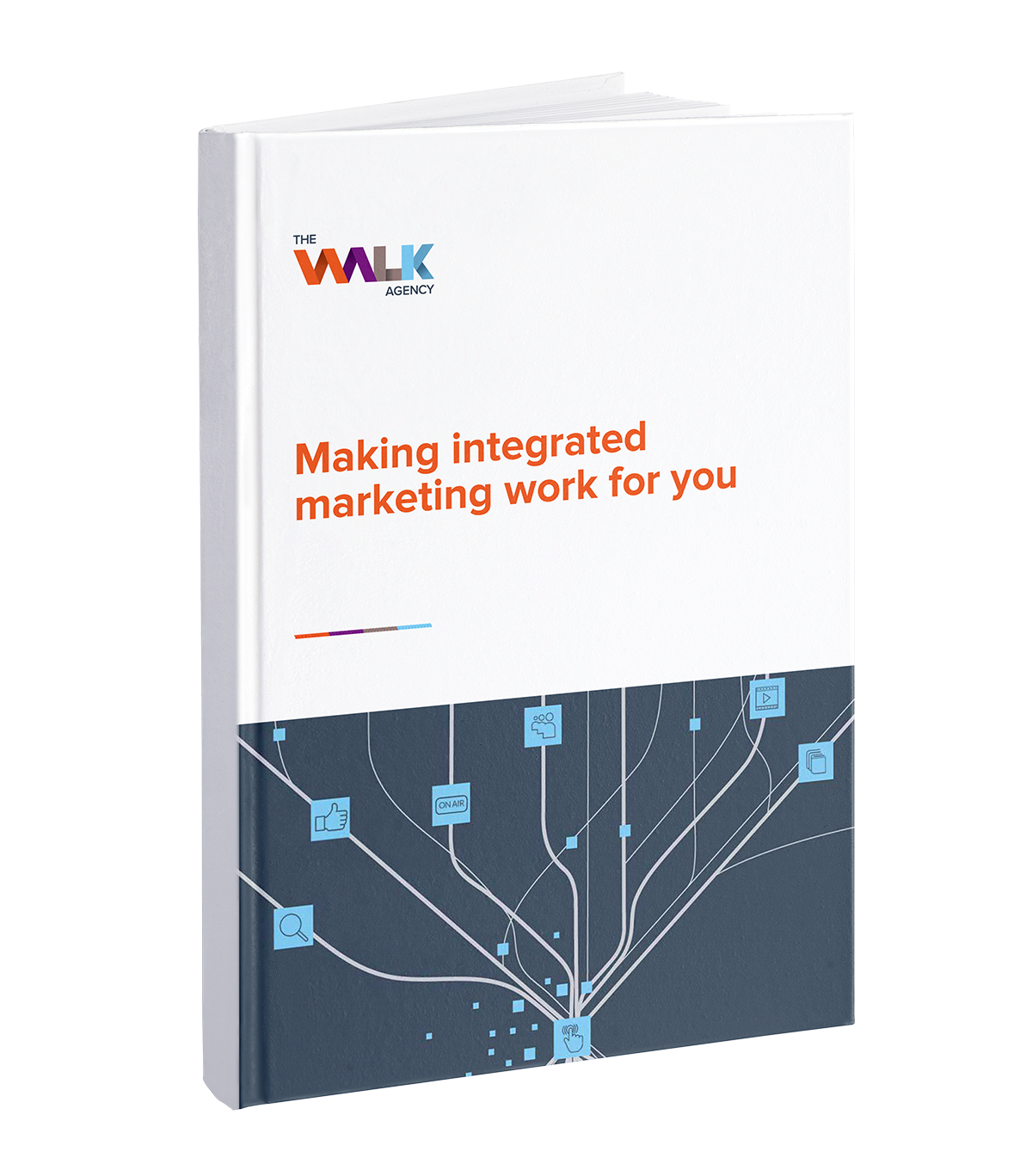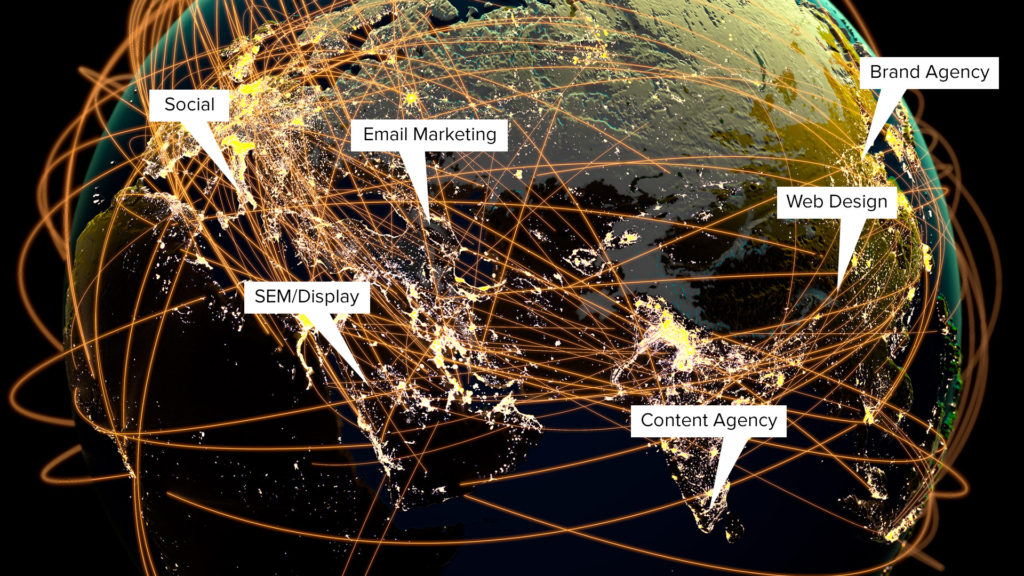The fiercely competitive B2B arena means leveraging multiple marketing channels is a no-brainer for increasing your chances of success. However, delivering a coherent marketing message across all the channels can be difficult without an organised plan of attack. An integrated marketing campaign delivers a coherent brand message (or story) across every marketing channel you’re pursuing. It creates a unified customer experience with a consistent message. A reinforced message ensures customers will have an easier time understanding what your brand is about — and of course be top of mind at the right time.
Integrated marketing campaigns are 31% more effective at brand building because they reach out to a larger portion of the market. Leveraging the strength of each channel also means it’s an essential strategy if you need to convey a complicated brand message.
Did you know? Research has found that integrated campaigns across 4+ channels are 300% more effective than single or dual-channel campaigns.
So how can you do it? Getting started with an integrated marketing campaign is straightforward. Here are 5 steps to help your campaign succeed:
1. Know your audience
Connecting with your audience is only possible if you understand who they are. You need to understand their motivational triggers, problems and demographics. Research can reveal information such as age, gender, annual salary, hobbies, geographical location and level of education. Gathering as much data as possible increases the effectiveness of targeted marketing campaigns.
Your audience will engage differently based on the marketing channel. Therefore, you’ll need to adapt the campaign message so it’s delivered with the most potency. However, the core brand message should never change since your audience may come across more than one of your marketing channels or campaigns over a long period of time.
2. Crafting your message
Identify which part of the customer decision process you are tackling with this integrated marketing campaign. It’s a good starting point because you can brainstorm ideas at the right stage of the marketing funnel. For example, towards the start of the funnel you might want to focus on problems or fears the customer is having. Towards the end of the funnel you’ll be focusing on product benefits and unique selling points (hopefully not just price promotions!).
Integrated marketing messages should grab the attention of your audience, and then inspire them to share with their social circles. Crafting a compelling/emotional story is a great way to achieve this objective.
Look at successful examples for inspiration. “Always #LikeAGirl” is an excellent integrated marketing campaign that provides support for girls as they transition to womanhood during puberty. The campaign focuses on overcoming the negative connotations of the phrase: “like a girl”. They used a mixture of social media, print and television to deliver their message.
 Read more about the integrated marketing campaign here.
Read more about the integrated marketing campaign here.
3. Actionable goals
Use SMART goal setting to increase your chances of success by 70%. Here is a breakdown of what this involves:
Specific: this stage is about asking the popular “w” questions (who, what, why, where, when) and having clear answers. Being specific ensures you have something to aim for, which can be used to track progress. Team members can visualise goals, which allows them to push forward.
Measurable: to achieve a goal there must be a way of measuring it. This might be looking at how many new email subscribers you receive or how many YouTube sales you generate for marketing videos. Tracking across multiple channels is also advantageous.
Achievable: unrealistic goals can be overwhelming, which can freeze people from taking action. Consider your resources, deadline and personnel to craft realistic goals. It might take trial and error before you can set goals that you know can be achieved within your deadline. Also, consider setting mini-goals that give team members a sense of accomplishment at regular intervals. Agencies can be used to scale efforts or close the skills gap with your in-house team.
Relevant: choose goals that help grow your brand, increase market share and improve profitability. Not thinking about goal relevancy may cause your marketing team to pursue the wrong key performance indicators. You’ll end up wasting resources and time that could have been better spent.
Time-bound: goals that drag on for a long time can do more harm than good. Set a realistic deadline that represents a steady company growth rate. Setting a deadline ensures action is taken sooner rather than later.
4. What marketing channels will you use and when?
In an ideal world you could explore every marketing channel out there to its full potential. However, you probably have a finite marketing budget so you need to choose your omni-channel marketing strategy carefully. This is where understanding your audience comes in handy.
Where are they hanging out and what media channels are they paying attention to? When are they consuming media — on the commute to work or when they get home in the evening?
Answers to these questions will help choose the right marketing channels and grab attention at the right time. You’ll make the most of a limited marketing budget, which is essential for small to medium sized companies.
5. Track your campaigns
Choose the right tools and software to monitor your integrated marketing campaign progress closely. You can opt for tools like Google Data Studio to pull information from every channel. Knowing what works and what doesn’t allows you to focus on the areas that need improvement.
Before buying, a customer might read an email, click on a Google ad, watch a video and read a social media post. An attribution model for conversion tracking will help make sense of the customer journey by assigning weight to the marketing channel that’s responsible for the sale. The model is more difficult to put in practice than on paper, but the data gathered can paint a full picture of channels to focus on.
Don’t forget about measuring traditional advertising performance. The “before and after” method can be used to see the difference in sales before running a campaign and just after. The limitation of this tracking method is that for a true test only one campaign can be run at a time. Code-specific campaigns also help track performance since sales can be linked to coupons and campaign specific phone numbers.

Conclusion
Carefully crafted and planned communication is essential for educating prospects on what your brand is about. Send the right message and they will get inspired enough to share with others. Or, they might arrive at your intended end goal, which could be an eBook, webinar or white paper. Integrated marketing isn’t just about ads, it needs to have a well-thought out message which takes users to a curated end point.
Understanding the marketing channels available and how each one is utilised to maximum effectiveness will elevate your business over the competition. Don’t forget to track everything that you’re doing to build on each campaign so the next is more successful than the last. Once you put the advice in this article into action you’ll have a well-oiled marketing machine that is a fearsome force in any industry.
Are you getting ready for an integrated marketing campaign or have one in the works you’d like to tell us about? Why not complete our discovery form? This simple 5 step form will help you deliver the upfront information we need in order to respond meaningfully to your challenge. Once we’ve received your information we’ll get in touch within 2 business days to help you rock your next integrated marketing campaign.





Be the first to comment on "5 simple steps to a successful integrated marketing campaign"